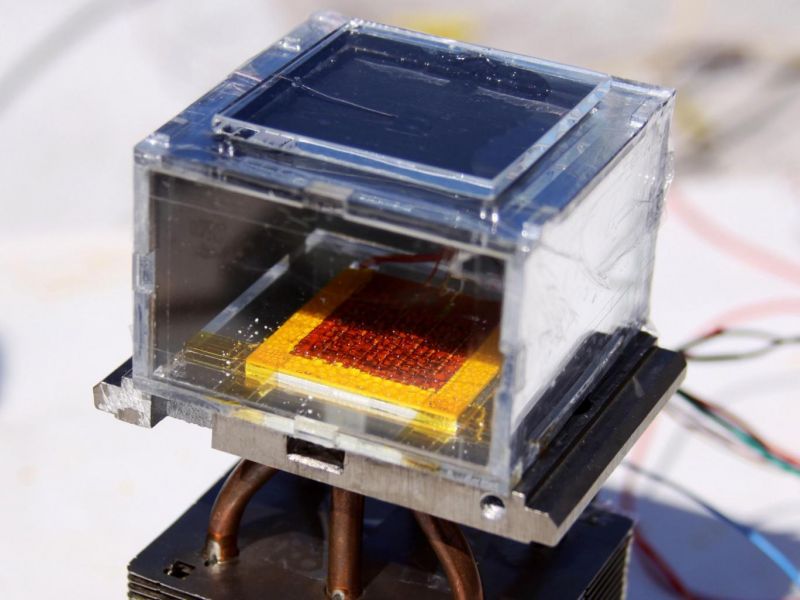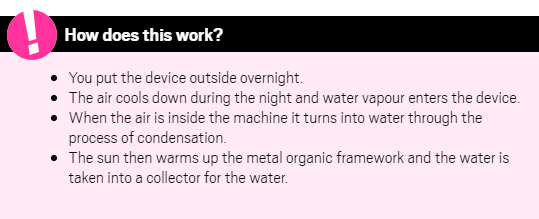Device Creates Water Out of Thin Air, Even in Deserts
Published on by Water Network Research, Official research team of The Water Network in Technology
Using only the power of the sun and a special material with some extraordinary properties, the device is capable of producing 2.8 litres of water in 12 hours.

A device that can create water out of thin air in even arid environments has been invented that could make Coleridge’s famous line “Water, water, everywhere, Nor any drop to drink” a thing of the past.
It can work in conditions where humidity is as low as 20 per cent.
Professor Omar Yaghi, who helped create the prototype water harverster, said: “We wanted to demonstrate that if you are cut off somewhere in the desert, you could survive because of this device.
“A person needs about a [330ml] can of water per day. That is something one could collect in less than an hour with this system.''
“One vision for the future is to have water off-grid, where you have a device at home running on ambient solar for delivering water that satisfies the needs of a household,” said Professor Yaghi, a chemist at University of California, Berkeley.
“To me, that will be made possible because of this experiment. I call it personalised water.”
The device, described in a paper in the journal Science, uses a type of metal-organic framework, or MOF, which Professor Yaghi invented 20 years ago.

Source: Metro
These combine metals like aluminium or magnesium with organic molecules. Since their invention, more than 20,000 different kinds of MOF have been created, each with different properties.
Some can capture carbon dioxide from chimneys, while others can separate out different types of oil in processing plants.
The water harvester uses zirconium and adipic acid, which binds water vapour.
Professor Yaghi teamed up with Professor Evelyn Wang, an engineer at the Massachusetts Institute of Technology, to create an effective device with help from colleagues.
The resulting harvester uses MOF crystals compressed between a solar absorber and a condenser plate.
As air passes through the porous MOF, water molecules attach themselves to the interior. Sunlight heats up the MOF and this drives the water molecules towards the condenser, where it is turned into liquid water.
“This work offers a new way to harvest water from air that does not require high relative humidity conditions and is much more energy efficient than other existing technologies,” Professor Wang said.
The current prototype can only absorb about 20 per cent of its weight in water, but it is thought using other MOF types could boost this to more than double that
Read more: Independent
Media
Taxonomy
- Treatment
- Water Scarcity
- Water Access
- Technology
- Filtration
- Water Scarcity In Desert area
- Solar Energy
- Drinking Water
- Solar Power
4 Comments
-
As with most devices touted as the break through technology. The math does not work to sustain the claims. Passive collectors must be sized to the site condition and the task at hand. As stated below.
-
Video about how it works https://www.theweathernetwork.com/us/news/articles/turning-desert-air-to-water-how-this-device-does-it/81750/
-
Dear Professors,
Please double check your declarations as they are unverified, you did not evaluate your product specially when your equipment is even required to cover the needs of one single family. If you have checked only the psychrometric charts you would have found that 1 kg of air which occupies 870 liters can provide only 10 gm of water.
Please double check again, what would be the size of your equipment if it is required to provide a single family with 1 m3/day.
-
another more recent artlcle http://www.smh.com.au/environment/solar-powered-device-pulls-drinking-water-straight-out-of-thin-air-20170417-gvm0x4.html